 With the coronavirus pandemic having reached almost every country in the world, the impact on the global economy has been catastrophic. Governments have struggled balancing the spread of the virus and keeping the economy afloat. This has left businesses counting the costs of various control measures and numerous lockdowns. The crisis has particularly affected small and medium-sized enterprises (SMEs), causing massive job losses and longer-term economic scars. Among these is an increase in the market power held by dominant firms as they emerge even stronger while smaller rivals fall away.
With the coronavirus pandemic having reached almost every country in the world, the impact on the global economy has been catastrophic. Governments have struggled balancing the spread of the virus and keeping the economy afloat. This has left businesses counting the costs of various control measures and numerous lockdowns. The crisis has particularly affected small and medium-sized enterprises (SMEs), causing massive job losses and longer-term economic scars. Among these is an increase in the market power held by dominant firms as they emerge even stronger while smaller rivals fall away.
It is feared that with the full effects of the pandemic not yet realised, there may well be a wave of bankruptcies that will hit SMEs harder than larger firms, particularly in the most affected industries. Larger firms are most likely to be more profitable in general and more likely to have access to finance. Firm-level analysis using Orbis data, which includes listed and private firms, suggests that the pandemic-driven wave of bankruptcies will lead to increases in industry concentration and market power.
What is market power?
 A firm holds a dominant position if its power enables it to operate within the market without taking account of the reaction of its competitors or of intermediate or final consumers. The key role of competition authorities around the world is to protect the public interest, particularly against firms abusing their dominant positions.
A firm holds a dominant position if its power enables it to operate within the market without taking account of the reaction of its competitors or of intermediate or final consumers. The key role of competition authorities around the world is to protect the public interest, particularly against firms abusing their dominant positions.
The UK’s competition authority, the Competition and Markets Authority (CMA) states:
Market power arises where an undertaking does not face effective competitive pressure. …Market power is not absolute but is a matter of degree; the degree of power will depend on the circumstances of each case. Market power can be thought of as the ability profitably to sustain prices above competitive levels or restrict output or quality below competitive levels. An undertaking with market power might also have the ability and incentive to harm the process of competition in other ways; for example, by weakening existing competition, raising entry barriers, or slowing innovation.
It can be hard to distinguish between a rapidly growing business and growing concentration of market power. In a pandemic, these distinctions can become even more difficult to discern, since there really is a deep need for a rapid deployment of capital, often in distressed situations. It is also not always evident whether the attempt to grow is driven by the need for more productive capacity, or by the desire to engage in financial engineering or to acquire market power.
It may be the case that, as consumers, we simply have no choice but to depend on various monopolies in a crisis, hoping that they operate in the public interest or that the competition authorities will ensure that they do so. With Covid-19 for example, economies will have entered the pandemic with their existing institutions, and therefore the only way to operate may be through channels controlled by concentrated power. Market dominance can occur for what seem to be good, or least necessary, reasons.
Why is market power a problem?
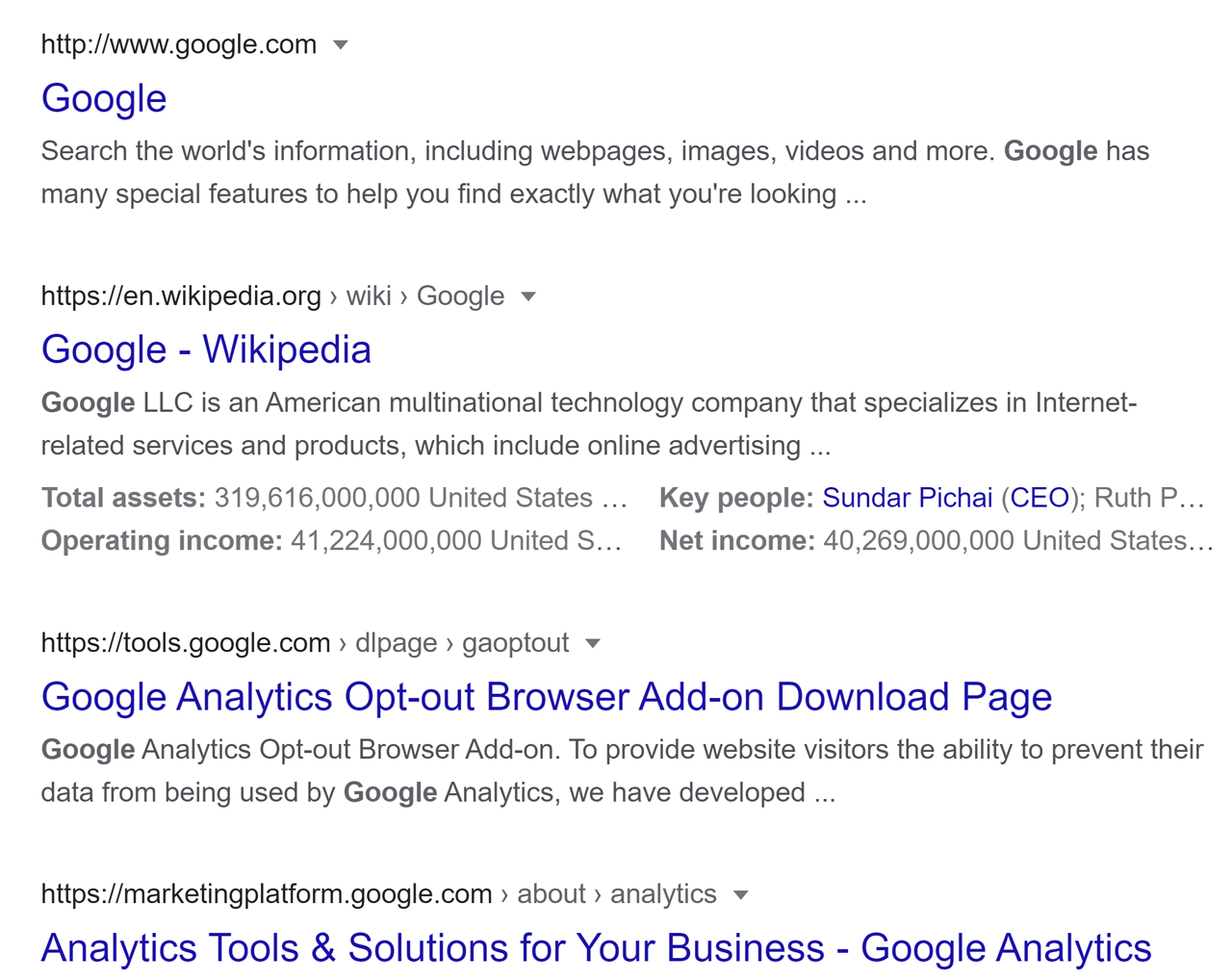 Why is it necessarily a problem if a successful company grows bigger than its competitors through hard work, smart strategies, and better technology adoption? It is important to recognise that increases in market power do not always mean an abuse of that market power. Just because a company may dominate the market, it does not mean there is a guaranteed negative impact on the consumer or industry. There are many advantages to a monopoly firm and, therefore, it can be argued that the existence of a market monopoly in itself should not be a cause of concern for the regulator. Unless there is evidence of past misconduct of dominance, which is abusive for the market and its stakeholders, some would argue that there is no justification for any involvement by regulators at all.
Why is it necessarily a problem if a successful company grows bigger than its competitors through hard work, smart strategies, and better technology adoption? It is important to recognise that increases in market power do not always mean an abuse of that market power. Just because a company may dominate the market, it does not mean there is a guaranteed negative impact on the consumer or industry. There are many advantages to a monopoly firm and, therefore, it can be argued that the existence of a market monopoly in itself should not be a cause of concern for the regulator. Unless there is evidence of past misconduct of dominance, which is abusive for the market and its stakeholders, some would argue that there is no justification for any involvement by regulators at all.
However, research by the International Monetary Fund concluded that excessive market power in the hands of a few firms can be a drag on medium-term growth, stifling innovation and holding back investment. Given the severity of the economic impact of the pandemic, such an outcome could undermine the recovery efforts by governments. It could also prevent new and emerging firms entering the market at a time when dynamism is desperately needed.
The ONS defines business dynamism as follows:
Business dynamism relates to measures of birth, growth and decline of businesses and its impact on employment. A steady rate of business creation and closure is necessary for an economy to grow in the long-run because it allows new ideas to flourish.
A lack of business dynamism could lead to a stagnation in productivity and wage growth. It also affects employment through changes in job creation and destruction. In this context, the UK’s most recent unemployment rate was 5%. This is the highest figure for five years and is predicted to rise to 6.5% by the end of 2021. Across multiple industries, there is now a trend of falling business dynamism with small businesses failing to break out of their local markets and start-up companies whose prices are undercut by a big rival. This creates missed opportunities in terms of growth, job creation, and rising incomes.
There has been a rise in mergers and acquisitions, especially amongst dominant firms, which is contributing to these trends. Again, it is important to recognise that mergers and acquisitions are not in themselves a problem; they can yield cost savings and produce better products. However, they can also weaken incentives for innovation and strengthen a firm’s ability to charge higher prices. Analysis shows that mergers and acquisitions by dominant firms contribute to an industry-wide decline in business dynamism.
Changes in market power due to the pandemic
The IMF identifies key indicators for market power, such as the percentage mark-up of prices over marginal cost, and the concentration of revenues among the four biggest players in a sector. New research shows that these key indicators of market power are on the rise. It is estimated that due to the pandemic, this increase in market dominance could now increase in advanced economies by at least as much as it did in the fifteen years to the end of 2015.
 Global price mark-ups have risen by more than 30%, on average, across listed firms in advanced economies since 1980. And in the past 20 years, mark-up increases in the digital sector have been twice as steep as economy-wide increases. Increases in market power across multiple industries caused by the pandemic would exacerbate a trend that goes back over four decades.
Global price mark-ups have risen by more than 30%, on average, across listed firms in advanced economies since 1980. And in the past 20 years, mark-up increases in the digital sector have been twice as steep as economy-wide increases. Increases in market power across multiple industries caused by the pandemic would exacerbate a trend that goes back over four decades.
It could be argued that firms enjoying this increase in market share and strong profits is just the reward for their growth. Such success if often a result of innovation, efficiency, and improved services. However, there are growing signs in many industries that market power is becoming entrenched amid an absence of strong competitors for dominant firms. It is estimated that companies with the highest mark-ups in a given year, have an almost 85 percent chance of remaining a high mark-up firm the following year. According to experts, some of these businesses have created entry barriers – regulatory or technology driven – which are incredibly high.
Professor Jayant R. Varma, a member of the MPC of the Reserve Bank of India (RBI), observed that in several sectors characterised by an oligopolistic core and a competitive periphery, the oligopolistic core has weathered the pandemic and it is the competitive periphery that has been debilitated. Rising profits and profit margins, improving capacity utilisation and lack of new capacity additions create ripe conditions for the oligopolistic core to start exercising pricing power.
The drivers and macroeconomic implications of such rises in market power are likely to differ across economies and individual industries. Even in those industries that benefited from the crisis, such as the digital sector, dominant players are among the biggest winners. The technology industry has been under the microscope in recent years, and increasingly the big tech firms are under scrutiny from regulators around the world. The market disruptors that displaced incumbents two decades ago have become increasingly dominant players that do not face the same competitive pressures from today’s would-be disruptors. The pandemic is adding to powerful underlying forces such as network effects and economies of scale and scope.
 A new regulator that aims to curb this increasing dominance of the tech giants has been established in the UK. The Digital Markets Unit (DMU) will be based inside the Competition and Markets Authority. The DMU will first look to create new codes of conduct for companies such as Facebook and Google and their relationship with content providers and advertisers. Business Secretary Kwasi Kwarteng said the regime will be ‘unashamedly pro-competition’.
A new regulator that aims to curb this increasing dominance of the tech giants has been established in the UK. The Digital Markets Unit (DMU) will be based inside the Competition and Markets Authority. The DMU will first look to create new codes of conduct for companies such as Facebook and Google and their relationship with content providers and advertisers. Business Secretary Kwasi Kwarteng said the regime will be ‘unashamedly pro-competition’.
Policy Responses
The additions in regulation in the UK fall in line with the guidance from the IMF. It recommends that adjustments to competition-policy frameworks need to be made in order to minimise the adverse effects of market dominance. Such adjustments must, however, be tailored to national circumstances, both in general and to address the specific challenges raised by the surge of the digital economy.
It recommends the following five actions:
- Competition authorities should be increasingly vigilant when enforcing merger control. The criteria for competition authorities to review a deal should cover all relevant cases – including acquisitions of small players that may grow to compete with dominant firms.
- Second, competition authorities should more actively enforce prohibitions on the abuse of dominant positions and make greater use of market investigations to uncover harmful behaviour without any reported breach of the law.
- Greater efforts are needed to ensure competition in input markets, including labour markets.
- Competition authorities should be empowered to keep pace with the digital economy, where the rise of big data and artificial intelligence is multiplying incumbent firms’ advantage. Facilitating data portability and interoperability of systems can make it easier for new firms to compete with established players.
- Investments may be needed to further boost sector-specific expertise amid rapid technological change.
Conclusion
The crisis has had a significant impact on all businesses, with many shutting their doors for good. However, there has been a greater negative impact on SMEs. Even in industries that have flourished from the pandemic, it is the dominant firms that have emerged the biggest winners. There is concern that the increasing market power will remain embedded in many economies, stifling future competition and economic growth. While the negative effects of increased market power have been moderate so far, the findings suggest that competition authorities should be increasingly vigilant to ensure that these effects do not become more harmful in the future.
Reviews of competition policy frameworks have already begun in some major economies. Young, high-growth firms that innovate and create high-quality jobs deserve a level playing field and a fair chance to succeed. Support directed to SMEs is important, as many small firms have been unable to benefit from government programmes designed to help firms access financing during the pandemic. Policymakers should act now to prevent a further, sharp rise in market power that could hold back the post-pandemic recovery.
Articles
Podcast
Official documents
Questions
- What are the arguments for and against the assistance of a monopoly?
- What barriers to entry may exist that prevent small firms from entering an industry?
- What policies can be implemented to limit market power?
- Define and explain market dynamism.
 Each week, BBC Radio 4 broadcasts readings from a book serialised in five 15-minute episodes. In the week beginning 18 January 2021, the readings were from English Pastoral: An Inheritance by James Rebanks, a farmer from the Cumbrian fells. His farm is relatively small, covering 185 acres.
Each week, BBC Radio 4 broadcasts readings from a book serialised in five 15-minute episodes. In the week beginning 18 January 2021, the readings were from English Pastoral: An Inheritance by James Rebanks, a farmer from the Cumbrian fells. His farm is relatively small, covering 185 acres.
He has attempted to make it much more sustainable and less intensive, reintroducing traditional Herdwick sheep, having a mixture of cows and sheep rather than just sheep, a greater sub-division of fields, and more natural scrubland, peatbogs and trees. As a result, soil quality has improved and there has been an explosion of biodiversity, with an abundance of wild flowers and insects.
Apart from being an autobiography of his time as a farmer and his attempt to move towards more traditional methods, the book examines broader issues of agricultural sustainability. It looks at the pressures of consumers wanting cheap food, the market power of supermarkets and wholesalers, the cost pressures on farmers pushing them towards monoculture to achieve economies of scale, and the role of the agrichemicals industry promoting fertilisers, feeds and pesticides which bring short-term financial gains to farmers, but which cause longer-term damage to the land and to biodiversity.
Rebanks has gained quite a lot of media attention after the publication of his first book, The Shepherd’s Life, including being one of the guests on Desert Island Discs and the subject of an episode of The Food Programme.
Listen to the Food Programme podcast and try answering the questions, which are all based on the podcast in the order of the points made in the interview.
Podcast
Reviews
Questions
- What are the incentives of an unregulated market for food that result in monoculture and a loss of biodiversity?
- To what extent are consumers responsible for changes in farming methods?
- Have the changes helped the urban poor?
- How is the monopsony power of supermarkets and food wholesalers impacting on food production and the pattern of agriculture?
- There are various (private) economies of scale in food production, but these often involve substantial external costs and long-term private costs too. How does this impact on land use?
- What are some of the limits of technology in increasing crop, meat and dairy yields?
- Will more recent changes in the pattern of food consumption help to increase mixed farming and biodiversity?
- Is it ‘rational’ for many farmers to continue with intensive farming with high levels of artificial fertilisers and pesticides?
- Is diversity in farming across farms within a local area a public good? If so, how could such diversity be achieved?
- How can farmers be encouraged to think and act holistically?
- Is there a trade-off between food output and biodiversity?
- What are the dangers in the UK reaching an agricultural trade deal with the USA?
- What are the benefits and costs of encouraging local food markets?
 Three international agencies, the IMF, the European Commission and the OECD, all publish six-monthly forecasts for a range of countries. As each agency’s forecasts have been published this year, so the forecasts for economic growth and other macroeconomic indicators, such as unemployment, have got more dire.
Three international agencies, the IMF, the European Commission and the OECD, all publish six-monthly forecasts for a range of countries. As each agency’s forecasts have been published this year, so the forecasts for economic growth and other macroeconomic indicators, such as unemployment, have got more dire.
The IMF was the first to report. Its World Economic Outlook, published on 14 April, forecast that in the UK real GDP would fall by 6.5% in 2020 and rise by 4% in 2021 (not enough to restore GDP to 2019 levels); in the USA it would fall by 5.9% this year and rise by 4.7% next year; in the eurozone it would fall by 7.5% this year and rise by 4.7% next.
The European Commission was next to report. Its AMECO database was published on 6 May. This forecast that UK real GDP would fall by 8.3% this year and rise by 6% next; in the USA it would fall by 6.5% this year and rise by 4.9% next; in the eurozone it would fall by 7.7% this year and rise by 6.3% next.
The latest to report was the OECD on 10 June. The OECD Economic Outlook was the most gloomy. In fact, it produced two sets of forecasts.
The first, more optimistic one (but still more gloomy than the forecasts of the other two agencies) was based on the assumption that lockdowns would continue to be lifted and that there would be no second outbreak later in the year. This ‘single-hit scenario’ forecast that UK real GDP would fall by 11.5% this year and rise by 9% next (a similar picture to France and Italy); in the USA it would fall by 7.3% this year and rise by 4.1% next; in the eurozone it would fall by 9.1% this year and rise by 6.5% next.
The second set of OECD forecasts was based on the assumption that there would be a second wave of the virus and that lockdowns would have to be reinstated. Under this ‘double-hit scenario’, the UK’s GDP is forecast to fall by 14.0% this year and rise by 5.0 per cent next; in the USA it would fall by 8.5% this year and rise by 1.9% next; in the eurozone it would fall by 11.5% this year and rise by 3.5% next.
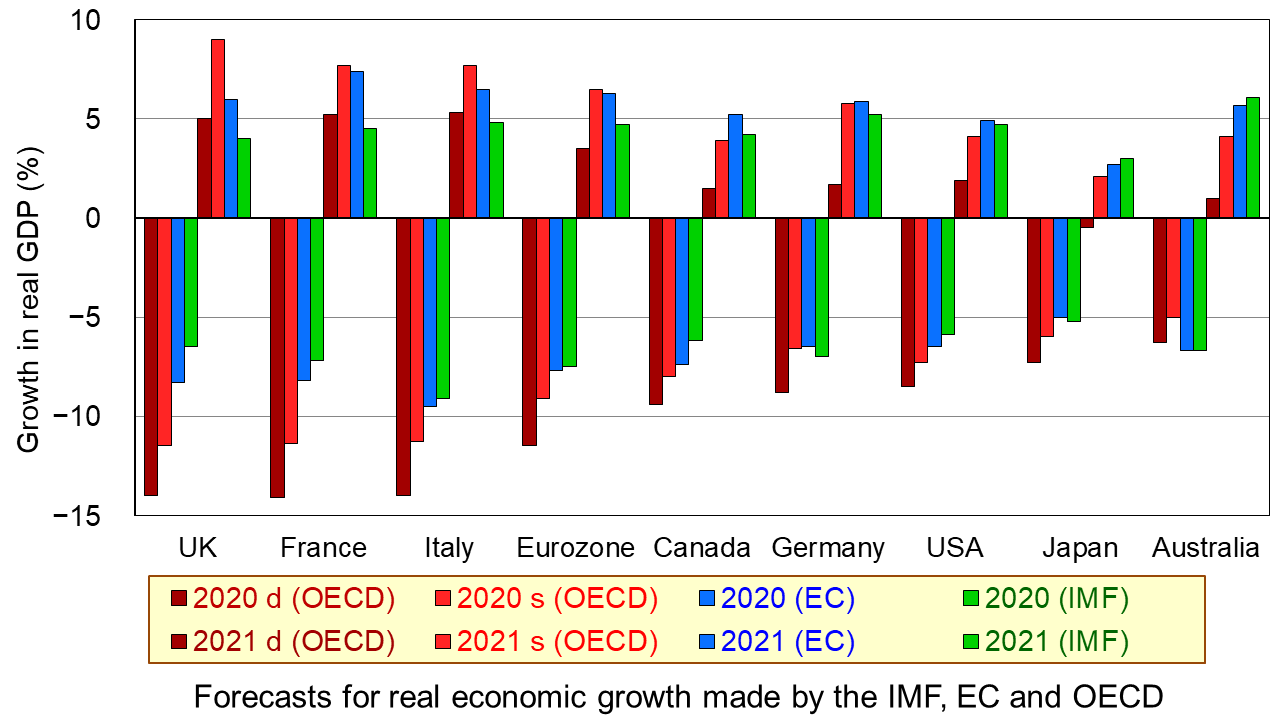
The first chart shows the four sets of forecasts (including two from the OECD) for a range of countries. The first four bars for each country are the forecasts for 2020; the other four bars for each country are for 2021. (Click here for a PowerPoint of the chart.)
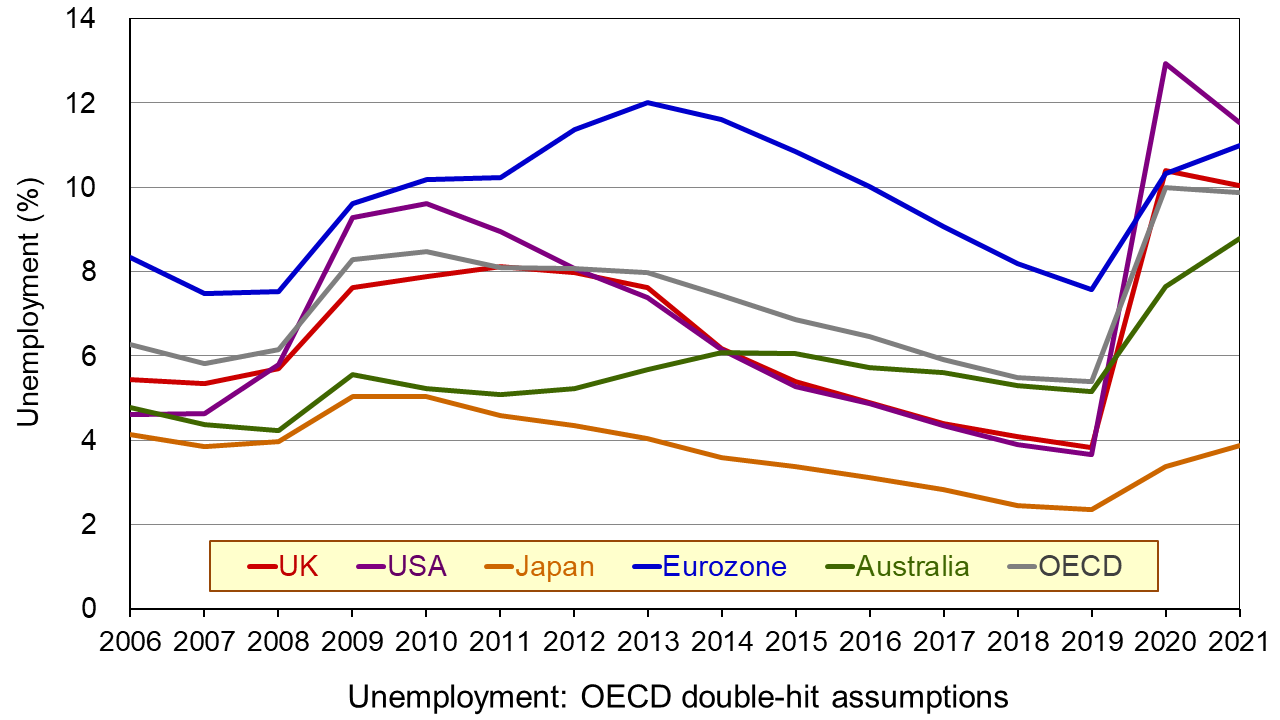
The second chart shows unemployment rates from 2006. The figures for 2020 and 2021 are OECD forecasts based on the double-hit assumption. You can clearly see the dramatic rise in unemployment in all the countries in 2020. In some cases it is forecast that there will be a further rise in 2021. (Click here for a PowerPoint of the chart.)
As the OECD states:
In both scenarios, the recovery, after an initial, rapid resumption of activity, will take a long time to bring output back to pre-pandemic levels, and the crisis will leave long-lasting scars – a fall in living standards, high unemployment and weak investment. Job losses in the most affected sectors, such as tourism, hospitality and entertainment, will particularly hit low-skilled, young, and informal workers.
But why have the forecasts got gloomier? There are both demand- and supply-side reasons.
Aggregate demand has fallen more dramatically than originally anticipated. Lockdowns have lasted longer in many countries than governments had initially thought, with partial lockdowns, which replace them, taking a long time to lift. With less opportunity for people to go out and spend, consumption has fallen and saving has risen. Businesses that have shut, some permanently, have laid off workers or they have been furloughed on reduced incomes. This too has reduced spending. Even when travel restrictions are lifted, many people are reluctant to take holidays at home and abroad and to use public transport for fear of catching the virus. This reluctance has been higher than originally anticipated. Again, spending is lower than before. Even when restaurants, bars and other public venues are reopened, most operate at less than full capacity to allow for social distancing. Uncertainty about the future has discouraged firms from investing, adding to the fall in demand.
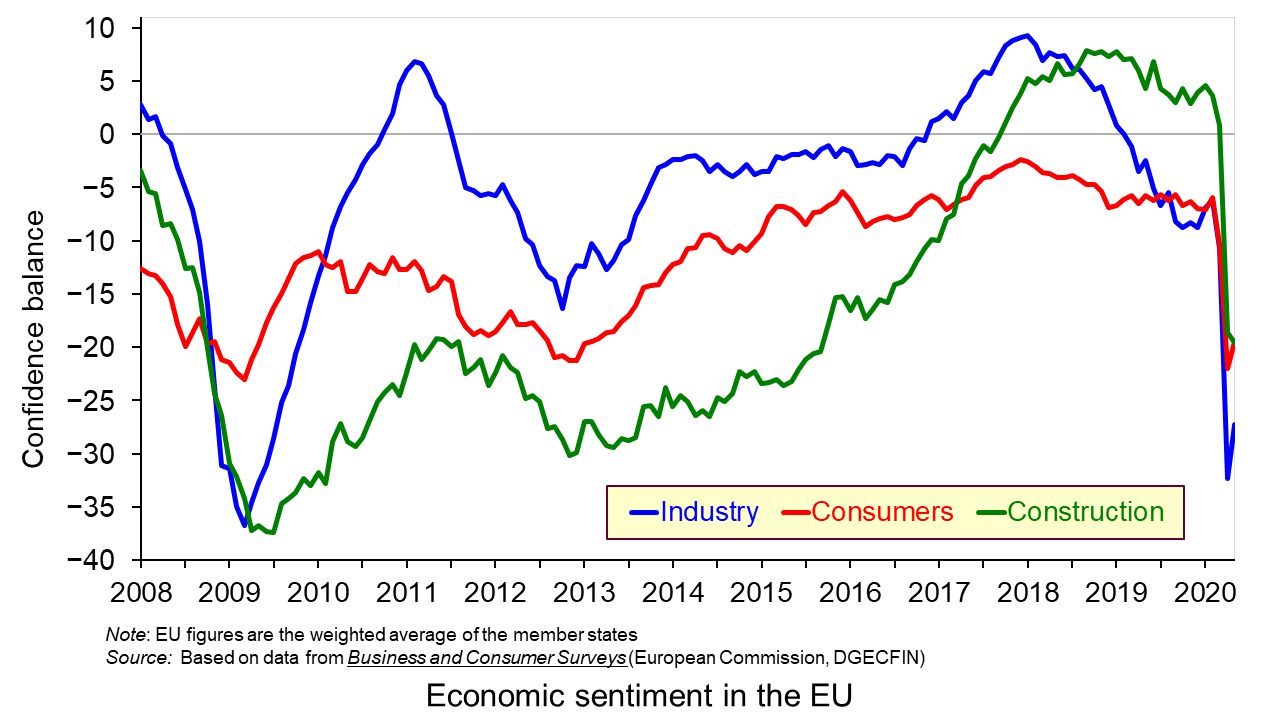
On the supply side, there has been considerable damage to capacity, with firms closing and both new and replacement investment being put on hold. Confidence in many sectors has plummeted as shown in the third chart which looks at business and consumer confidence in the EU. (Click here for a PowerPoint of the above chart.) Lack of confidence directly affects investment with both supply- and demand-side consequences.
Achieving a sustained recovery will require deft political and economic judgements by policymakers. What is more, people are increasingly calling for a different type of economy – one where growth is sustainable with less pollution and degradation of the environment and one where growth is more inclusive, where the benefits are shared more equally. As Angel Gurría, OECD Secretary-General, states in his speech launching the latest OECD Economic Outlook:
The aim should not be to go back to normal – normal was what got us where we are now.
Articles
OECD publications
Questions
- Why has the UK economy been particularly badly it by the Covid-19 pandemic?
- What will determine the size and timing of the ‘bounce back’?
- Why will the pandemic have “dire and long-lasting consequences for people, firms and governments”?
- Why have many people on low incomes faced harsher consequences than those on higher incomes?
- What are the likely environmental impacts of the pandemic and government measures to mitigate the effects?
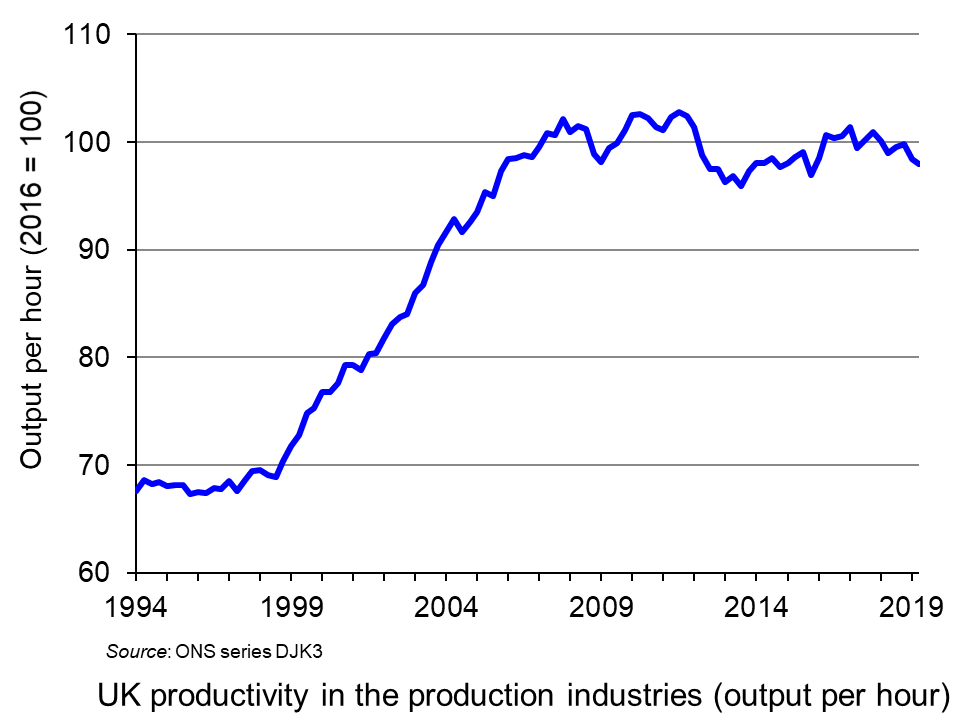 A lack of productivity growth has been a major problem for the UK economy over the past decade (click here for a PowerPoint of the chart). Is it possible that the new decade may see a pick-up in the growth in output per hour worked?
A lack of productivity growth has been a major problem for the UK economy over the past decade (click here for a PowerPoint of the chart). Is it possible that the new decade may see a pick-up in the growth in output per hour worked?
One possible solution to low productivity growth is to reduce working hours and even to move to a four-day week, but not to reduce total pay. If people work fewer hours, they may well be more productive in the hours they do work. In fact, not only may output per hour increase, but so too may output per worker, despite fewer hours being worked. What is more, the quality of output may increase with people being less tired and more motivated.
Several companies have experimented with a four-day week, including Microsoft in Japan, which employees 2300 workers. It found that, despite a 20% reduction in hours worked, output per hour worked increased by 40%, with total output thereby increasing. Workers were generally happier and more motivated and asked for fewer days off.
And it is not just a question of output: fewer hours can result in lower costs. The effect on costs will depend on the nature of new work patterns, including whether everyone has the same extra day off.
But a four-day week is only one way of cutting working hours for full-time employees. Another is to reduce the length of the working day. The argument is that people may work more efficiently if the standard working day is cut from eight to, say, five hours. As the first Thrive Global article article (linked below) states:
Just because you’re at your desk for eight hours doesn’t mean you’re being productive. Even the best employees probably only accomplish two to three hours of actual work. The five-hour day is about managing human energy more efficiently by working in bursts over a shorter period.
If people have more leisure time, this could provide a boost to the leisure and other industries. According to a Henley Business School study:
An extra day off could have a knock-on effect for the wider society. We found 54% of employees said they would spend their day shopping, meaning a potential boost for the high street, 43% would go to the cinema or theatre and 39% would eat out at restaurants.
What is more, many people would be likely to use the extra time productively, undertaking training, volunteering or other socially useful activities. Also family life is likely to improve, with people spending less time at work and commuting and having more time for their partners, children, other relatives and friends. In addition, people’s physical and mental health is likely to improve as they achieve a better work-life balance.
 So, should firms be encouraged to reduce hours for full-time workers with no loss of pay? Many firms may need no encouragement at all if they can see from the example of others that it is in their interests. But many firms may find it difficult, especially if their suppliers and/or customers are sticking with ‘normal’ working hours and want to do business during those hours. But, over time, as more firms move in this direction, so it will become increasingly in the interests of others to follow suit.
So, should firms be encouraged to reduce hours for full-time workers with no loss of pay? Many firms may need no encouragement at all if they can see from the example of others that it is in their interests. But many firms may find it difficult, especially if their suppliers and/or customers are sticking with ‘normal’ working hours and want to do business during those hours. But, over time, as more firms move in this direction, so it will become increasingly in the interests of others to follow suit.
In the meantime, should the government introduce incentives (such as tax breaks) or regulations to limit the working week? Indeed, it was part of the Labour manifesto for the December 2019 election that the country should, over time, move to a four-day week. Although this was a long-term goal, it would probably have involved the use of some incentives to encourage employers to move in that direction or the gradual introduction of limits on the number of hours or days per week that people could work in a particular job. It is unlikely that the new Conservative government will introduce any specific measures, but would probably not want to discourage firms from reducing working hours, especially if it is accompanied by increased output per worker.
But despite the gains, there are some problems with reduced working hours. Many small businesses, such as shops, restaurants and firms offering technical support, may not have the flexibility to offer reduced hours, or may find it hard to increase productivity when there is a specific amount of work that needs doing, such as serving customers.
Another problem concerns businesses where the output of individuals is not easy to measure because they are part of a team. Reducing hours or the working week may not make such people work harder if they can ‘get way with it’. Not everyone is likely to be motivated by fewer hours to work harder.
Then there is the problem if reduced hours don’t work in boosting productivity. It may then be very difficult to reintroduce longer hours.
But, despite these problems, there are many firms where substantial gains in productivity could be made by restructuring work in a way that reduces hours worked. We may see more and more examples as the decade progresses.
Podcast
Articles
- Economics of a four-day working week: research shows it can save businesses mone
The Conversation, Miriam Marra (11/11/19)
- Less hours for work, more time on Earth: Why a four-day working week is good for you
Independent, Steve Taylor (16/12/19)
- Microsoft Japan Launched A Four-Day Workweek To Much Success: Is This The Key To Attracting Talent In The Tight U.S. Job Market?
Forbes, Jack Kelly (5/11/19)
- Will The Five-Hour Work Day Catch On In America?
Forbes, Jack Kelly (28/10/19)
- My Company Implemented a 5-Hour Workday — and the Results Have Been Astounding
Thrive Global, Stephan Aarstol (3/10/19)
- Why Does a Four-Day Work Week Achieve Better Results?
Thrive Global, Stephanie Lin (16/12/19)
- Four-Day Working Week Improves Staff’s Mental Health By 87%, Company Finds
Unilad, Niamh Shackleton (10/12/19)
- Hull business launches four-day working week as well as your birthday off and ‘Beer Fridays’
Hull Live, Phil Winter (5/12/19)
- A four-day work week? Sounds nice, but here’s the real deal
Sydney Morning Herald, Tony Featherstone (21/11/19)
- The four-day debate: Fantasy or feasible?
The Hindu, Business Live, Kamal Karanth (20/11/19)
- Finland’s ministry of transport floats tech-enabled four-day week
Computer Weekly, Gerard O’Dwyer (20/11/19)
- Should You Consider a 4 Day Work Week?
Small Business Trends, Rob Starr (5/12/19)
Report
Questions
- Distinguish between different ways of measuring labour productivity.
- Give some examples (from the linked references) of employers which have tried introducing a four-day week or reduced hours for full-time workers. What has been the outcome in each case?
- In what ways may reducing working hours reduce a firm’s total costs?
- What are the advantages and disadvantages of the government imposing (at some point in the future) a maximum working week or a four-day week?
- What types of firm might struggle in introducing a four-day week or a substantially reduced number of hours for full-time employees?
- What external benefits and costs might arise from a shorter working week?
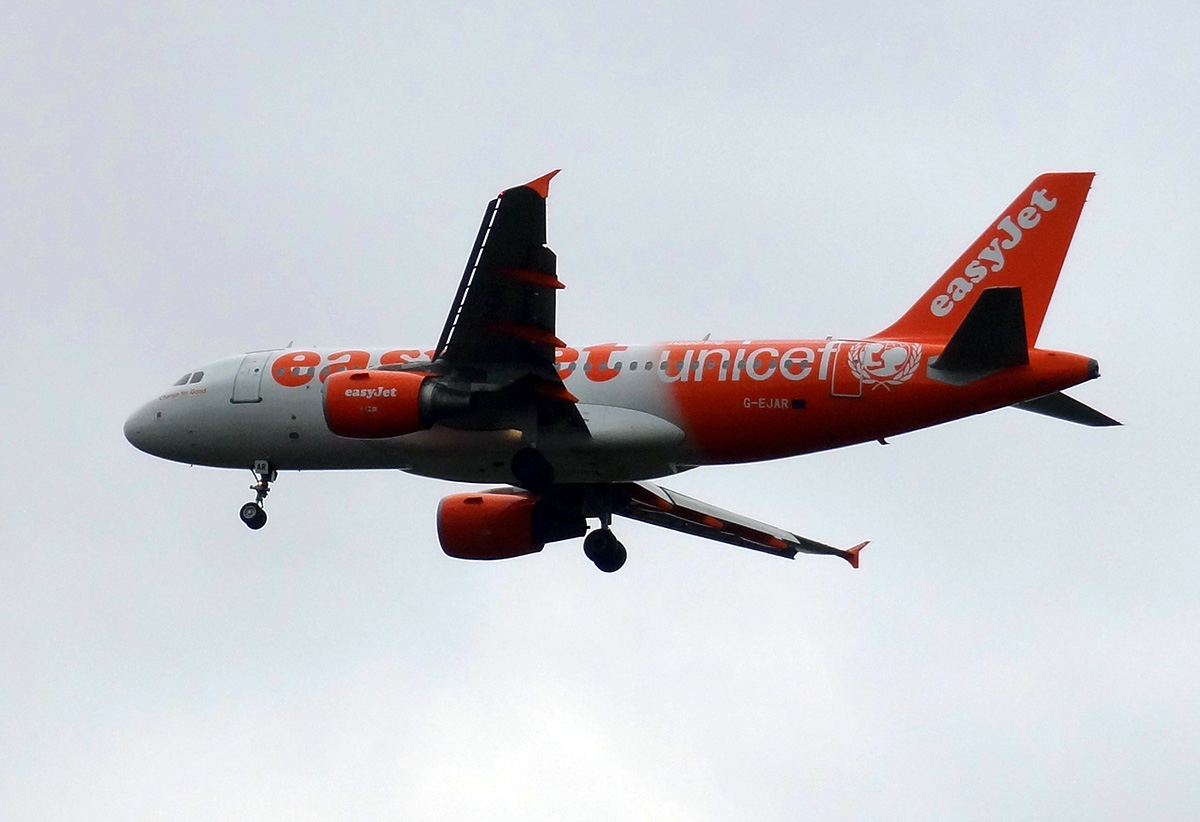 The USA has seen many horizontal mergers in recent years. This has turned industries that were once relatively competitive into oligopolies, resulting in lower output and higher prices for consumers.
The USA has seen many horizontal mergers in recent years. This has turned industries that were once relatively competitive into oligopolies, resulting in lower output and higher prices for consumers.
In Europe, by contrast, many markets are becoming more competitive. The result is that in industries such as mobile phone services, airlines and broadband provision, prices are considerably lower in most European countries than in the USA. As the French economist, Thomas Philippon, states in a Guardian article:
When I landed in Boston in 1999, the United States was the land of free markets. Many goods and services were cheaper than in Europe. Twenty years later, American free markets are becoming a myth.
According to Asher Schechter (see linked article below):
Nearly every American industry has experienced an increase in concentration in the last two decades, to the point where … sectors dominated by two or three firms are not the exception, but the rule.
The result has been an increase in deadweight loss, which, according to research by Bruno Pelligrino, now amounts to some 13.3 per cent of total potential surplus.
Philippon in his research estimates that monopolies and oligopolies “cost the median American household about $300 a month” and  deprive “American workers of about $1.25tn of labour income every year”.
deprive “American workers of about $1.25tn of labour income every year”.
One industry considered by the final two linked articles below is housebuilding. Since the US housing and financial crash of 2007–8 many US housebuilders have gone out of business. This has meant that the surviving companies have greater market power. According to Andrew van Dam in the linked Washington Post article below:
They have since built on that advantage, consolidating until many markets are controlled by just a few builders. Their power has exacerbated the country’s affordable-housing crisis, some economists say.
According to research by Luis Quintero and Jacob Cosman:
… this dwindling competition has cost the country approximately 150 000 additional homes a year – all else being equal. With fewer competitors, builders are under less pressure to beat out rival projects, and can time their efforts so that they produce fewer homes while charging higher prices.
Thanks to lobbying of regulators and politicians by businesses and various unfair, but just about legal, practices to exclude rivals, competition policy in the USA has been weak.
In the EU, by contrast, the competition authorities have been more active and tougher. For example, in the airline industry, EU regulators have “encouraged the entry of low-cost competitors by making sure they could get access to takeoff and landing slots.” Politicians from individual EU countries have generally favoured tough EU-wide competition policy to prevent companies from other member states getting an unfair advantage over their own country’s companies.
Articles
Questions
- What are the possible advantages and disadvantages of oligopoly compared with markets with many competitors?
- How can concentration in an industry be measured?
- Why have US markets become more concentrated?
- Why have markets in the EU generally become more competitive?
- Find out what has happened to levels of concentration in the UK housebuilding market.
- What are the possible effects of Brexit on concentration and competition policy in the UK?
 With the coronavirus pandemic having reached almost every country in the world, the impact on the global economy has been catastrophic. Governments have struggled balancing the spread of the virus and keeping the economy afloat. This has left businesses counting the costs of various control measures and numerous lockdowns. The crisis has particularly affected small and medium-sized enterprises (SMEs), causing massive job losses and longer-term economic scars. Among these is an increase in the market power held by dominant firms as they emerge even stronger while smaller rivals fall away.
With the coronavirus pandemic having reached almost every country in the world, the impact on the global economy has been catastrophic. Governments have struggled balancing the spread of the virus and keeping the economy afloat. This has left businesses counting the costs of various control measures and numerous lockdowns. The crisis has particularly affected small and medium-sized enterprises (SMEs), causing massive job losses and longer-term economic scars. Among these is an increase in the market power held by dominant firms as they emerge even stronger while smaller rivals fall away. A firm holds a dominant position if its power enables it to operate within the market without taking account of the reaction of its competitors or of intermediate or final consumers. The key role of competition authorities around the world is to protect the public interest, particularly against firms abusing their dominant positions.
A firm holds a dominant position if its power enables it to operate within the market without taking account of the reaction of its competitors or of intermediate or final consumers. The key role of competition authorities around the world is to protect the public interest, particularly against firms abusing their dominant positions. Why is it necessarily a problem if a successful company grows bigger than its competitors through hard work, smart strategies, and better technology adoption? It is important to recognise that increases in market power do not always mean an abuse of that market power. Just because a company may dominate the market, it does not mean there is a guaranteed negative impact on the consumer or industry. There are many advantages to a monopoly firm and, therefore, it can be argued that the existence of a market monopoly in itself should not be a cause of concern for the regulator. Unless there is evidence of past misconduct of dominance, which is abusive for the market and its stakeholders, some would argue that there is no justification for any involvement by regulators at all.
Why is it necessarily a problem if a successful company grows bigger than its competitors through hard work, smart strategies, and better technology adoption? It is important to recognise that increases in market power do not always mean an abuse of that market power. Just because a company may dominate the market, it does not mean there is a guaranteed negative impact on the consumer or industry. There are many advantages to a monopoly firm and, therefore, it can be argued that the existence of a market monopoly in itself should not be a cause of concern for the regulator. Unless there is evidence of past misconduct of dominance, which is abusive for the market and its stakeholders, some would argue that there is no justification for any involvement by regulators at all.  Global price mark-ups have risen by more than 30%, on average, across listed firms in advanced economies since 1980. And in the past 20 years, mark-up increases in the digital sector have been twice as steep as economy-wide increases. Increases in market power across multiple industries caused by the pandemic would exacerbate a trend that goes back over four decades.
Global price mark-ups have risen by more than 30%, on average, across listed firms in advanced economies since 1980. And in the past 20 years, mark-up increases in the digital sector have been twice as steep as economy-wide increases. Increases in market power across multiple industries caused by the pandemic would exacerbate a trend that goes back over four decades.  A new regulator that aims to curb this increasing dominance of the tech giants has been established in the UK. The Digital Markets Unit (DMU) will be based inside the Competition and Markets Authority. The DMU will first look to create new codes of conduct for companies such as Facebook and Google and their relationship with content providers and advertisers. Business Secretary Kwasi Kwarteng said the regime will be ‘unashamedly pro-competition’.
A new regulator that aims to curb this increasing dominance of the tech giants has been established in the UK. The Digital Markets Unit (DMU) will be based inside the Competition and Markets Authority. The DMU will first look to create new codes of conduct for companies such as Facebook and Google and their relationship with content providers and advertisers. Business Secretary Kwasi Kwarteng said the regime will be ‘unashamedly pro-competition’. The pandemic a year on
The pandemic a year on Each week, BBC Radio 4 broadcasts readings from a book serialised in five 15-minute episodes. In the week beginning 18 January 2021,
Each week, BBC Radio 4 broadcasts readings from a book serialised in five 15-minute episodes. In the week beginning 18 January 2021,  Three international agencies, the IMF, the European Commission and the OECD, all publish six-monthly forecasts for a range of countries. As each agency’s forecasts have been published this year, so the forecasts for economic growth and other macroeconomic indicators, such as unemployment, have got more dire.
Three international agencies, the IMF, the European Commission and the OECD, all publish six-monthly forecasts for a range of countries. As each agency’s forecasts have been published this year, so the forecasts for economic growth and other macroeconomic indicators, such as unemployment, have got more dire. 


 A lack of productivity growth has been a major problem for the UK economy over the past decade (click
A lack of productivity growth has been a major problem for the UK economy over the past decade (click  So, should firms be encouraged to reduce hours for full-time workers with no loss of pay? Many firms may need no encouragement at all if they can see from the example of others that it is in their interests. But many firms may find it difficult, especially if their suppliers and/or customers are sticking with ‘normal’ working hours and want to do business during those hours. But, over time, as more firms move in this direction, so it will become increasingly in the interests of others to follow suit.
So, should firms be encouraged to reduce hours for full-time workers with no loss of pay? Many firms may need no encouragement at all if they can see from the example of others that it is in their interests. But many firms may find it difficult, especially if their suppliers and/or customers are sticking with ‘normal’ working hours and want to do business during those hours. But, over time, as more firms move in this direction, so it will become increasingly in the interests of others to follow suit. The USA has seen many horizontal mergers in recent years. This has turned industries that were once relatively competitive into oligopolies, resulting in lower output and higher prices for consumers.
The USA has seen many horizontal mergers in recent years. This has turned industries that were once relatively competitive into oligopolies, resulting in lower output and higher prices for consumers.  deprive “American workers of about $1.25tn of labour income every year”.
deprive “American workers of about $1.25tn of labour income every year”.